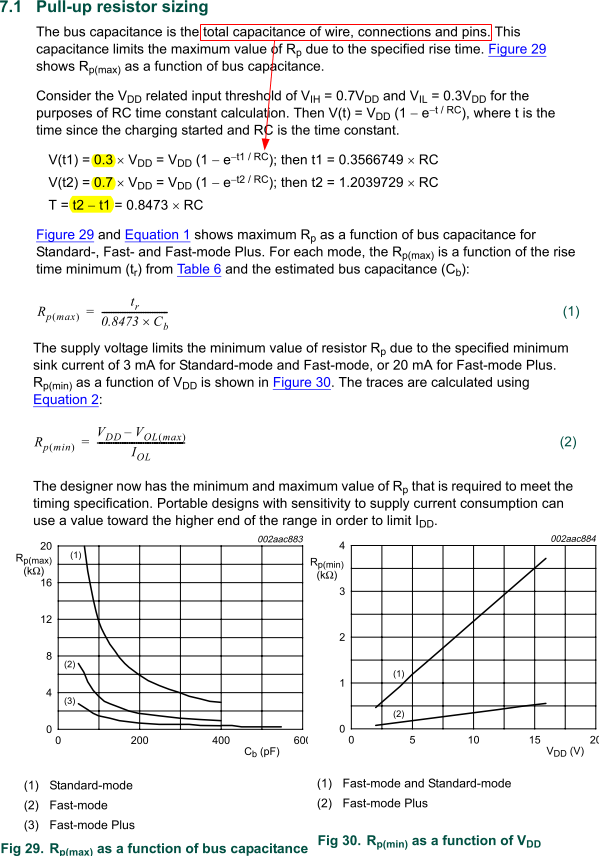Hi,
Ordinarily, many I2C protocols require pulling-up resistors with typical value of 2.2K.

However, in TXS0102 there are internal pulling-up resistors of 10K on both A and B side. Does this mean external pulling up resistors with value like 2.2K are no longer needed?
Or, if I am keeping both the original 2.2K and 10K of TXS0102, then in the case when either A or B side of the I2C is being pulled low by turning on the open-drain transistor, the equivalent pulling-up resistor would have value:
R = 2.2K ∥10K ∥10K = 1.53K.
Is this calculation correct? Would 1.53K pulling-up resistor work?
Philips

According to UM10204 I2C-bus specification and user manual, there are requirements on RP(min) and RP(min) to meet protocol timing and driving capability specification. So should the actual value be calculated accordingly with wire, connection and pins being taken into account?
Tim Baker

